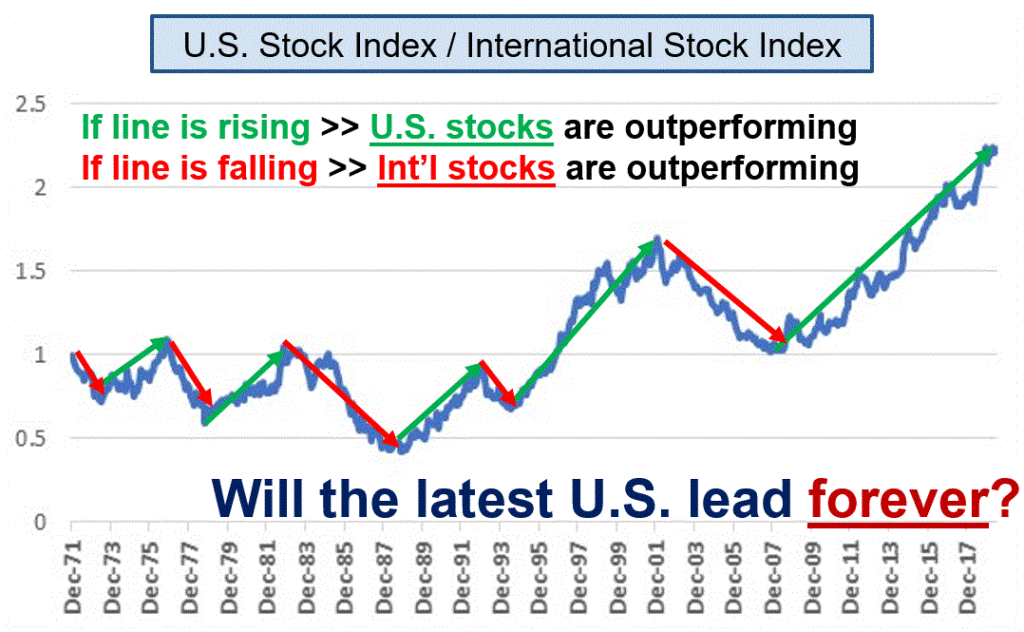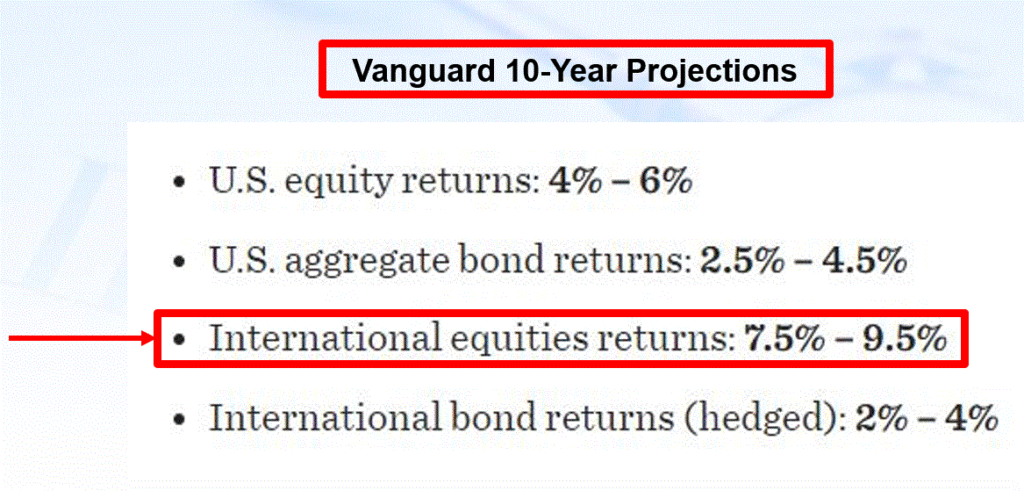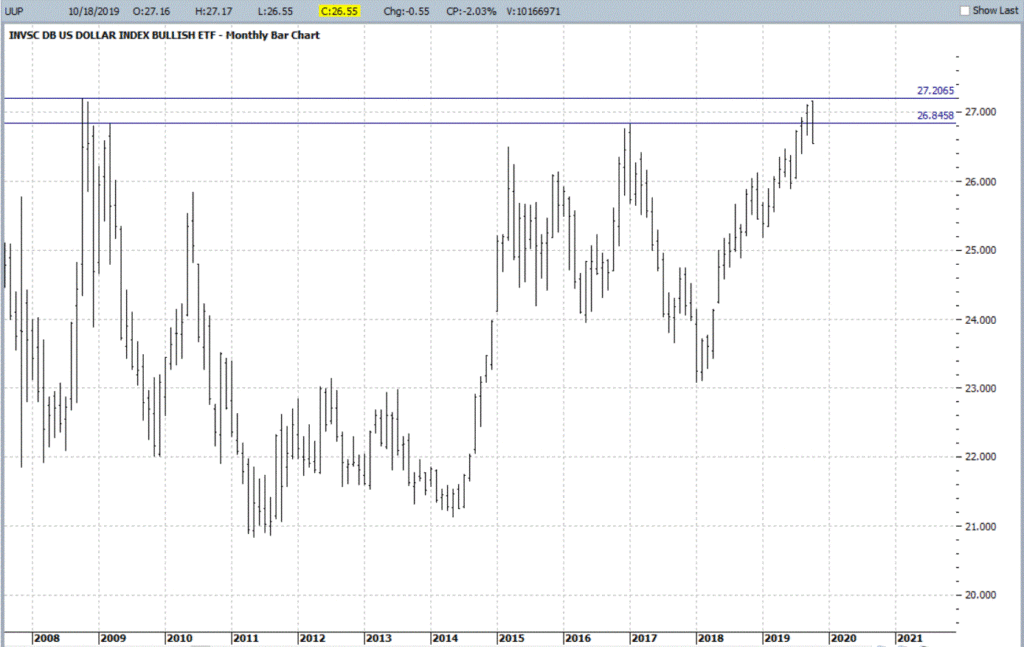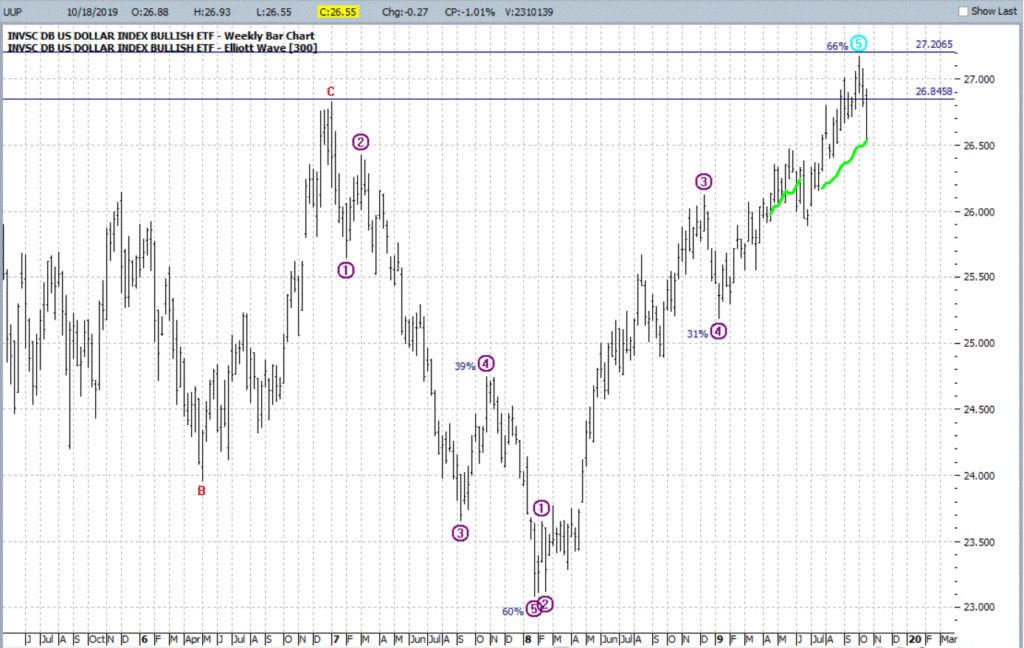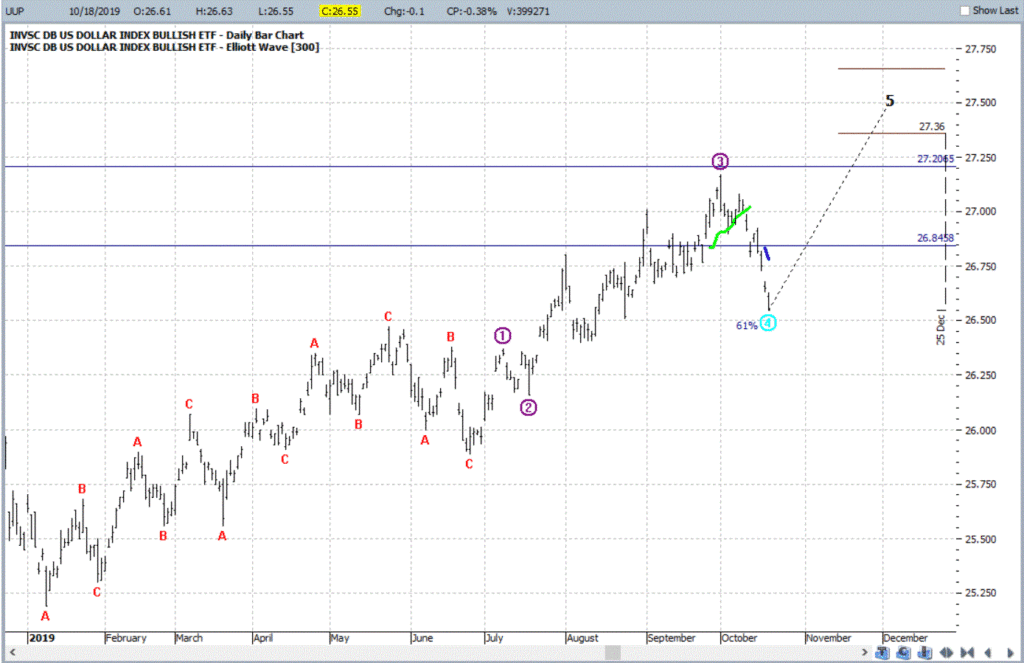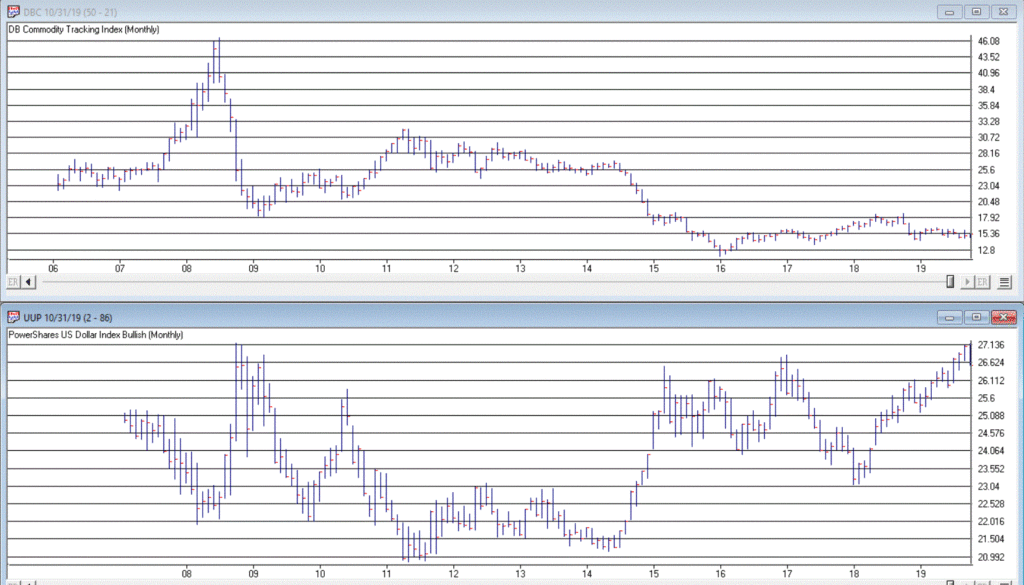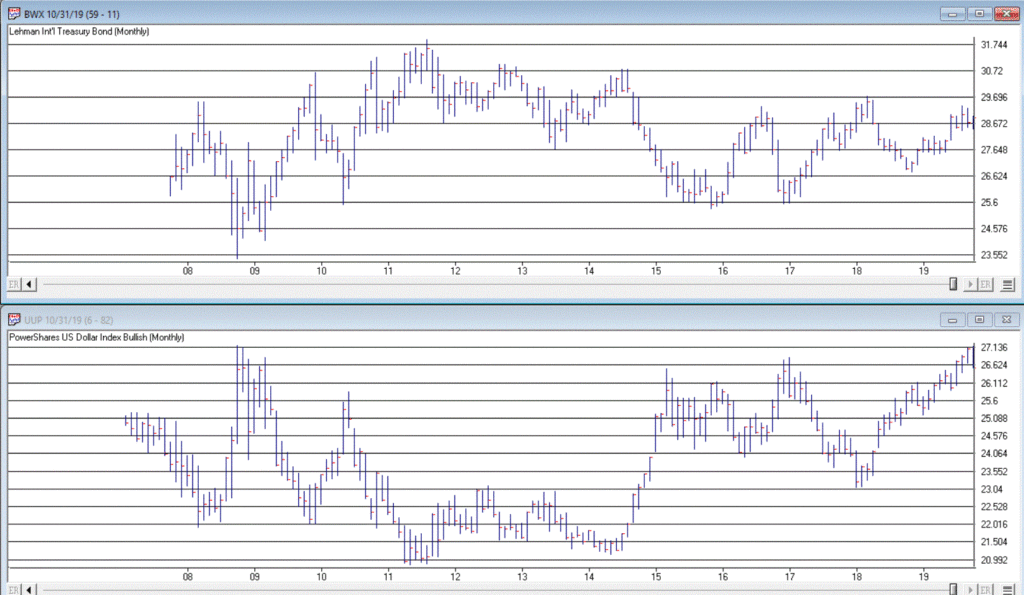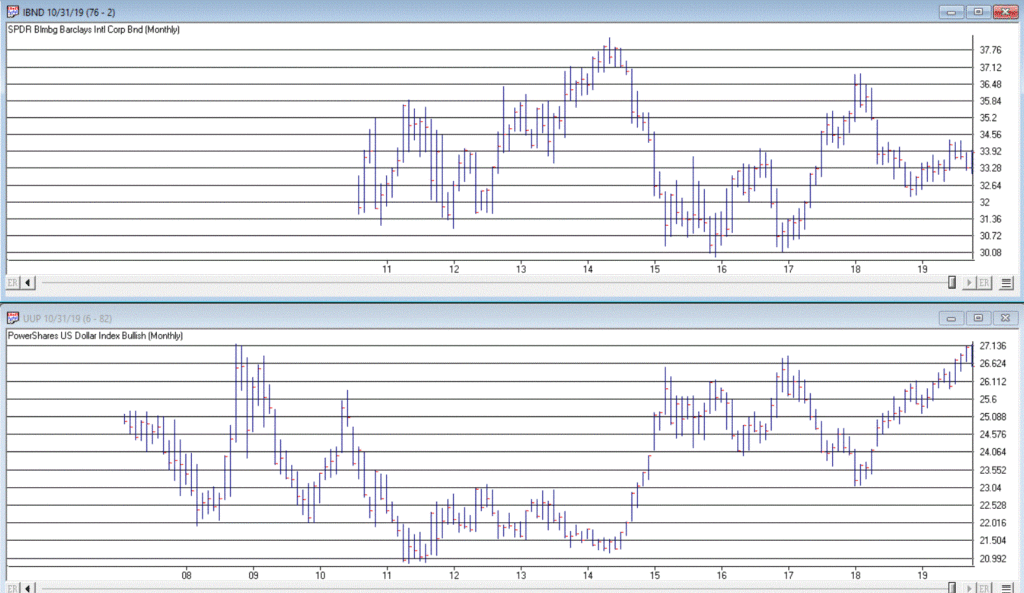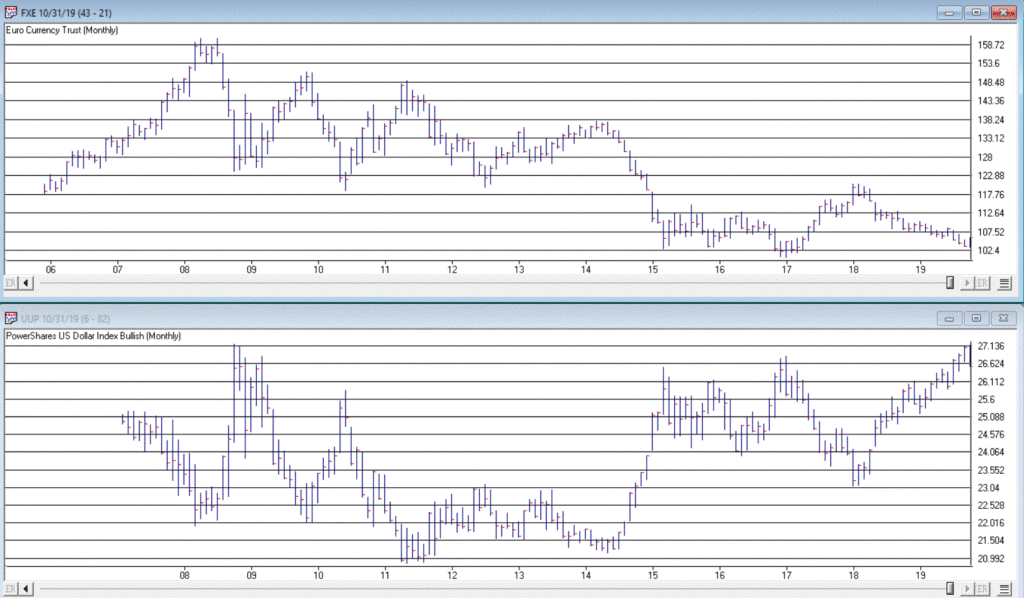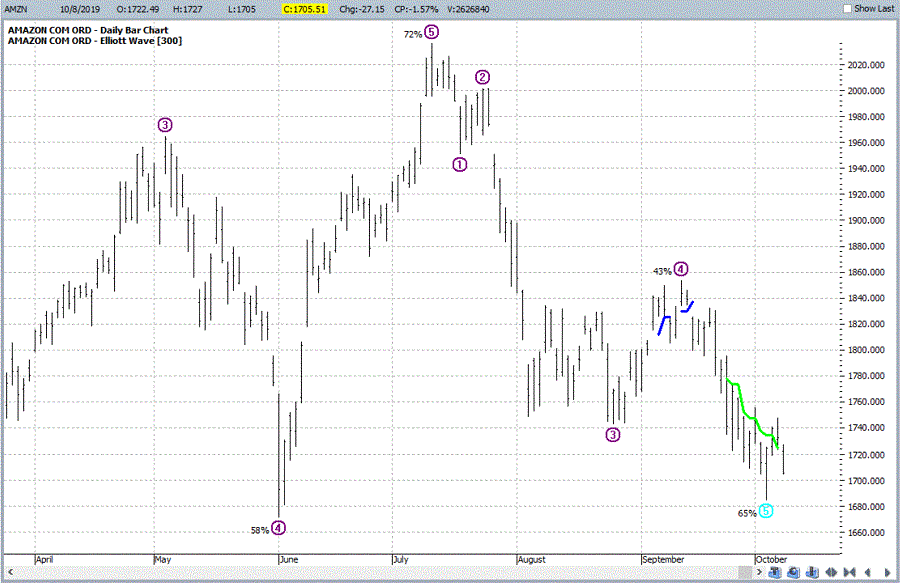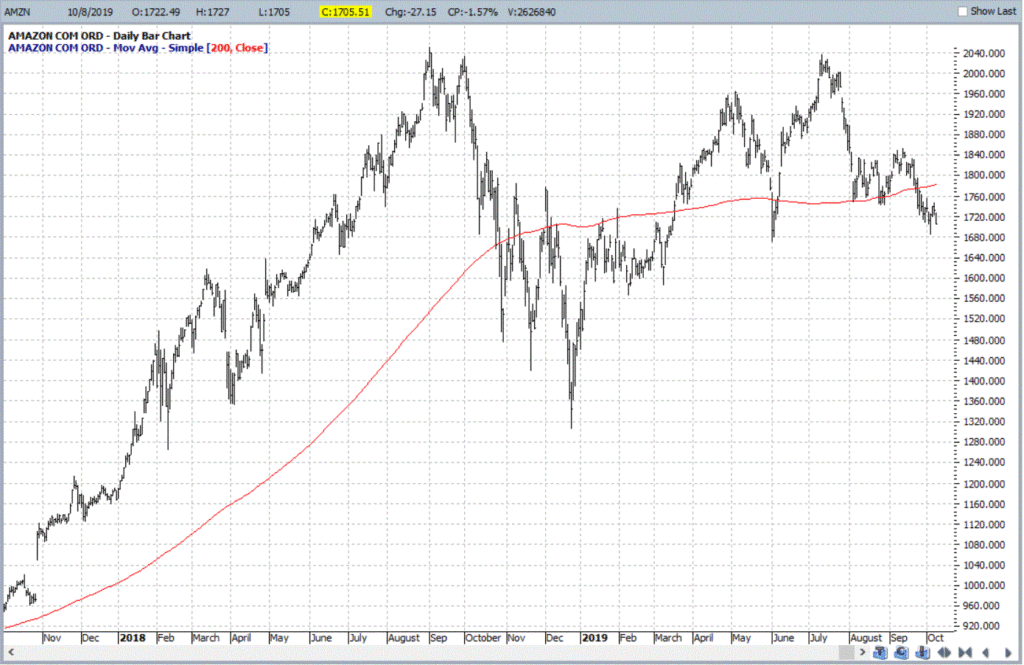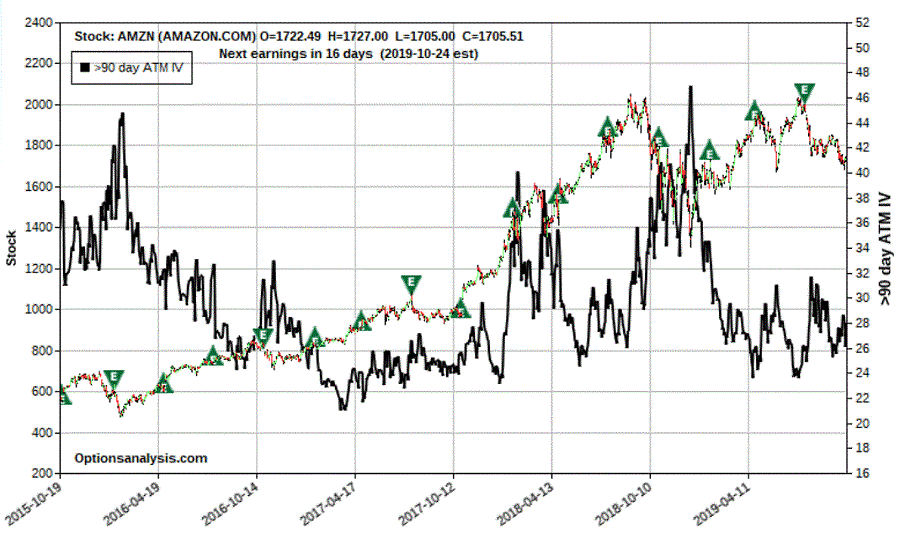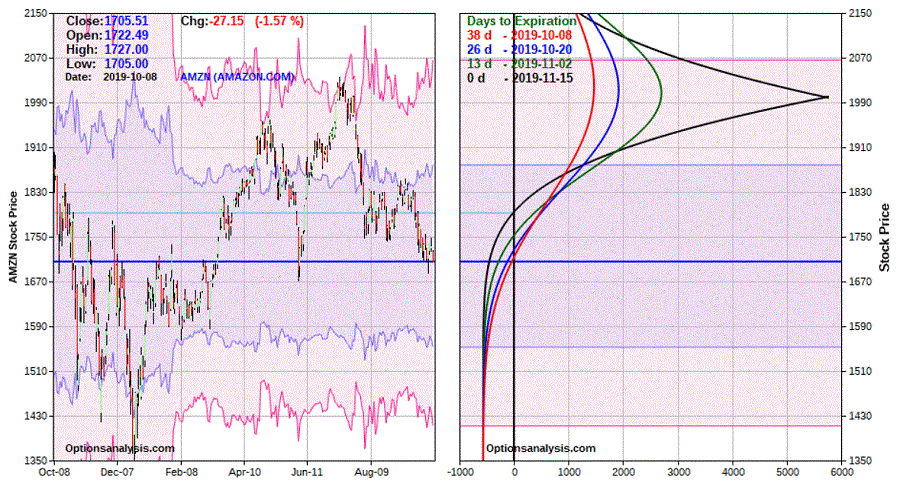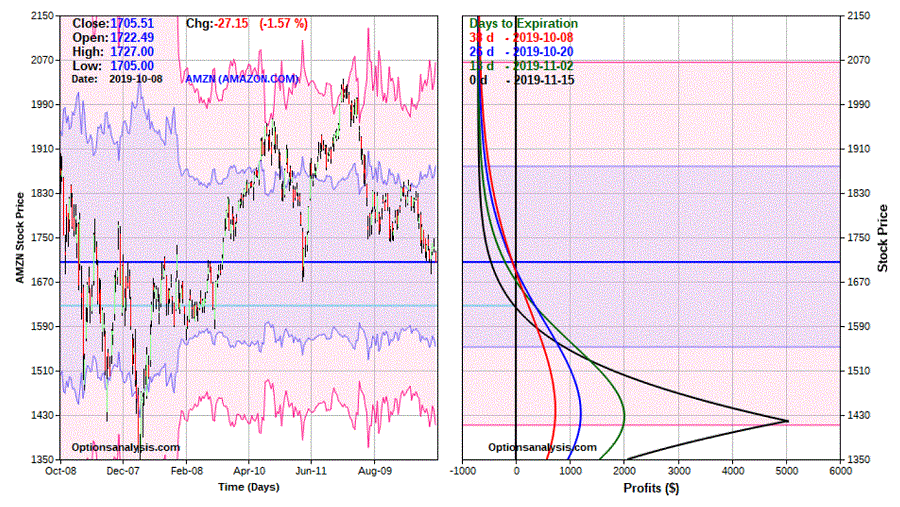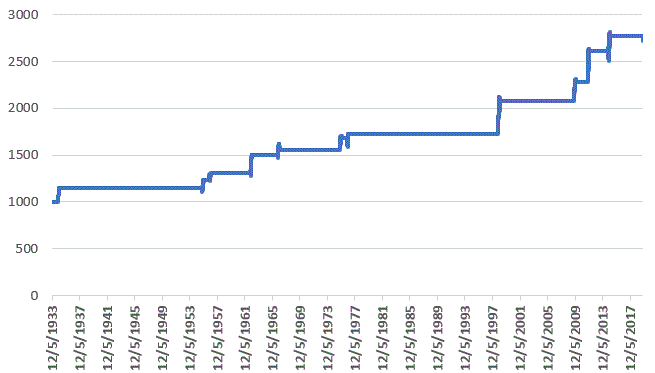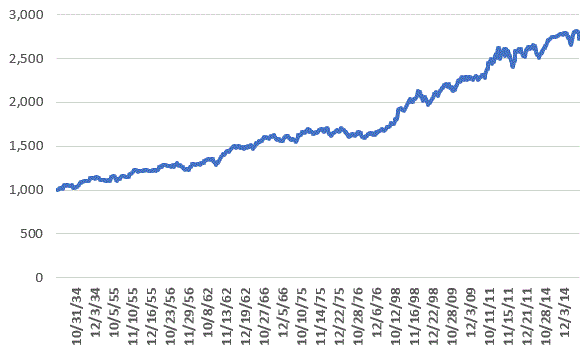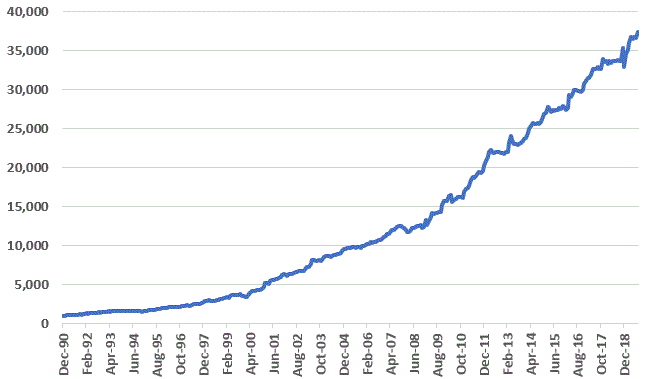In Part I here and Part II here, I make the argument that the next 10 years or so in the stock market will likely not look a lot like the last 10 years. I also highlighted two “areas” that are seemingly due for a “reversion to the mean” sometime in the years ahead.
This is the third and final installment.
Stocks versus Commodities
When I started in this business, commodities were all the rage. Of course, we had inflation of about 11% and interest rates in the 15% range at the time. So, yes, it was a very different time and very different set of circumstances. And “no”, I am not pounding the table while ranting about “impending inflation.” I mean, I would never rule it out, but there is no evidence at the moment that inflation is going to be a significant problem anytime soon. The nature of my argument here is simply more of the cyclical nature of markets.
Figure 1 displays the cumulative growth for both the Goldman Sachs Commodity Index (GSCI) and the S&P 500 Index (SPX) since 1971.

Figure 1 – Growth of $1,000 invested in the Goldman Sachs Commodity Index (blue) versus the S&P 500 Index Index (orange); Dec-1971 through Sep-2019
Here is where “statistics” can be misleading. If we look at the raw total return, stocks are the hands down winner:
*SPX up +11,797%
*GSCI up +1,617%
However, the reality is that in mid-2009 they were even. So, all of the difference has occurred in the past 10 years, which have been an extraordinarily favorable time for stocks.
But the real story is the “back and forth” nature of the performance of these two asset classes. Figure 2 displays:
*5-year return for GSCI minus 5-year return for SPX
*Positive readings indicate that commodities have outperformed stocks over prior 5 years
*Negative readings indicate that stocks have outperformed commodities over prior 5 years

Figure 2 – Cumulative 5-year total return for Goldman Sachs Commodity Index minus cumulative 5-year total return for S&P 500 Index; Dec-1971-Sep-2019
Figure 3 displays the length of time (in months) during which commodities outperformed stocks (positive values) and the length of time (in months) during which stocks outperformed commodities (negative values)
Here is how to read Figure 3:
*If GSCI has outperformed SPX over the previous 5 years, then the value is positive and gets more positive with each month that commodities lead stocks.
*If GSCI has underperformed SPX over the previous 5 years, then the value is negative and gets more negative with each month that stocks lead commodities.

Figure 3 – # of Months commodities outperformed stocks (positive) and vice versa (negative); Dec-1971-Sep-2019
The primary point is to note an obvious “ying” and “yang” over time, i.e., commodities lead for a period of time, then stocks lead for a period of time.
Commodities have been seriously underperforming stocks for a number of years now and it is difficult to predict when that trend will change. Given the vastly superior performance for stocks have enjoyed over the past 10 years, I can’t help but think that commodities will once again gain favor sometime in the not too distant future.
A few commodity index ETF’s (or ETN’s) appear in Figure 4. As always, I am not “recommending” these securities or suggesting the “right now” is the time to be buying them. All I am saying is that I think “their day will come.”
| Ticker | ETF Name |
| DBC | Invesco DB Commodity Index Tracking Fund |
| GSG | iShares S&P GSCI Commodity-Indexed Trust |
| DJP | iPath Bloomberg Commodity Index Total Return(SM) ETN |
| RJI | ELEMENTS Rogers International Commodity Index |
Figure 4 – Commodity index tracking ETF and ETNs
Summary of Parts I, II and II
The three articles sin this series were intended solely to highlight the cyclical nature of certain segments of the financial markets. The 3 areas I highlighted were:
*U.S. Stock indexes versus International stock indexes
*Growth stocks versus Value stocks
*Stocks versus Commodities
For each of the pairs listed above (and as the articles attempted to highlight) have a long history of “back and forth” in terms of performance. In each of the above cases, the asset class named first has been significantly outperforming the asset class named second for some time now.
My thinking is that – if history proves an accurate guide – things will reverse sometime in the years ahead. The main purpose of these articles was to attempt to wake investors from the typical lethargy that lets in when “things are the way they are” for a long period of time and investors fall into the trap of expecting those “things” to continue indefinitely.
While I am not making any claim that now is the time for any specific action, I am making the following suggestion:
Be prepared for change.
Jay Kaeppel
Disclaimer: The information, opinions and ideas expressed herein are for informational and educational purposes only and are based on research conducted and presented solely by the author. The information presented does not represent the views of the author only and does not constitute a complete description of any investment service. In addition, nothing presented herein should be construed as investment advice, as an advertisement or offering of investment advisory services, or as an offer to sell or a solicitation to buy any security. The data presented herein were obtained from various third-party sources. While the data is believed to be reliable, no representation is made as to, and no responsibility, warranty or liability is accepted for the accuracy or completeness of such information. International investments are subject to additional risks such as currency fluctuations, political instability and the potential for illiquid markets. Past performance is no guarantee of future results. There is risk of loss in all trading. Back tested performance does not represent actual performance and should not be interpreted as an indication of such performance. Also, back tested performance results have certain inherent limitations and differs from actual performance because it is achieved with the benefit of hindsight.







